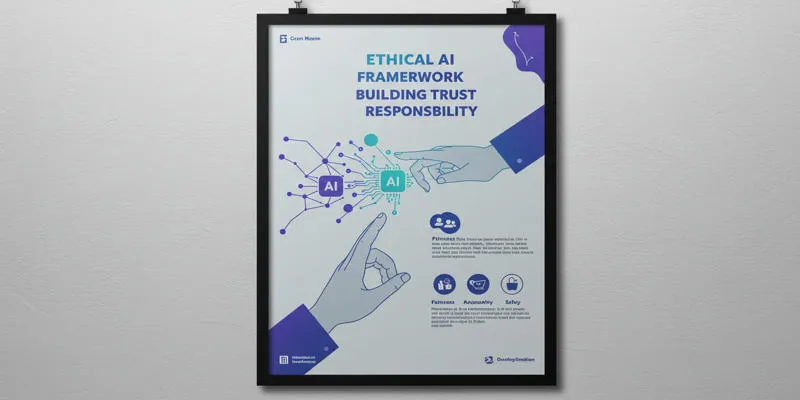IBM has unveiled a specialized AI mainframe designed to help businesses process data-intensive workloads more intelligently and efficiently. This system redefines the traditional mainframe by embedding AI capabilities directly into its architecture. Many companies have struggled to apply advanced analytics while keeping operations secure and steady.
IBM’s approach makes it possible to keep data on-site, analyze it in real time, and maintain reliability without heavily relying on cloud services. This new mainframe promises to simplify how organizations use AI, reducing risks and delays often caused by moving sensitive data off-premise.
Why Is IBM Focusing on AI Mainframes?
For decades, IBM mainframes have been the backbone of business operations, trusted for their reliability and capacity to handle enormous transaction volumes. As artificial intelligence becomes central to decision-making, many organizations realize that moving all their data to the cloud isn’t as simple—or as wise—as it once seemed. Cloud reliance has exposed businesses to rising costs, inconsistent performance, and regulatory hurdles. For industries such as healthcare, banking, and government, where privacy regulations are strict and breaches costly, sending sensitive data off-site is a significant concern.

IBM’s specialized AI mainframe was built with these realities in mind. It integrates AI processing into the same trusted system that already runs mission-critical workloads. Companies no longer need separate hardware for analytics and day-to-day operations, avoiding the delays and complexity of managing two environments. For sectors where downtime isn’t an option—such as airlines, insurance, or retail—being able to analyze data in real-time on the same platform ensures smooth, uninterrupted service.
Energy usage has also become a pressing issue. Running extra servers just for AI eats up budgets and power. IBM’s solution streamlines everything into one efficient system, cutting energy and cooling costs while keeping performance high. This makes it a smart choice for companies trying to meet sustainability targets without cutting corners.
How Does the Mainframe Work?
At the heart of IBM’s AI mainframe are specialized inference accelerators—custom-designed chips that handle AI tasks much faster and more efficiently than traditional processors. Unlike cloud-based AI systems, which require constant data transfer over networks, this mainframe performs computations locally. This improves response times and reduces bottlenecks.
One of its defining features is the ability to run hybrid workloads. Rather than splitting analytical and operational functions into separate systems, the mainframe combines them. For example, a bank can process transactions and run fraud detection models at the same time, in the same place, without delays. This capability supports better decision-making in real time, which many industries have been seeking.
IBM has also placed a strong emphasis on security. Since all processing happens on-site, businesses keep full control of sensitive information. Advanced encryption and access controls safeguard data throughout processing, which is particularly valuable to industries with strict compliance requirements. Companies can meet regulatory standards while still using advanced analytics to gain insights from their data.
Scalability is another aspect that sets this mainframe apart. Organizations can start small and add capacity as demand grows, without redesigning their systems. This allows businesses to match their AI investment to their immediate needs while keeping the option to expand in the future.
The Business Case for AI on Mainframes
For businesses already running mission-critical operations, shifting entirely to cloud-based AI platforms has often proven too disruptive. The AI mainframe provides a more practical route by integrating with systems they already use.

One of the strongest arguments for on-premise AI is speed. Many applications—predicting customer churn, detecting fraud, optimizing logistics—require instant results. When data must travel to and from the cloud, even a few seconds of delay can result in lost opportunities or poor service. Processing everything locally eliminates this lag, making it easier to deliver timely and relevant insights.
Cost predictability is another consideration. Cloud AI services often come with fluctuating fees that are difficult to forecast, especially as data volumes grow. With a mainframe, companies can budget more accurately while avoiding unexpected costs tied to bandwidth or storage.
The system is also designed to work with widely used open-source tools, so companies don’t have to abandon their current models or retrain teams from scratch. Existing AI projects can often transition directly onto the mainframe, shortening the time needed to get value from the new system.
For enterprises that already use IBM mainframes, adding AI functionality is straightforward. The hardware and software fit neatly into existing environments, eliminating the need to maintain two separate infrastructures. This reduces complexity and minimizes the risk of errors that can occur when managing siloed systems. Even companies without prior IBM investments might find the combination of AI and reliable operations appealing, given the growing demand for real-time insights alongside transactional stability.
The Road Ahead for IBM’s Specialized AI Mainframe
The launch of IBM’s specialized AI mainframe marks a notable step forward in enterprise computing. As businesses produce increasing amounts of data and demand faster, smarter analysis, the need for localized and dependable AI systems is only expected to grow. This mainframe is built to meet those needs without asking companies to compromise security, performance, or compliance.
By bringing AI directly to where data resides, IBM is filling a gap in the market. Many organizations have struggled to roll out AI effectively because of privacy risks, inconsistent performance, and high costs tied to external solutions. This mainframe offers a more balanced and sustainable way to adopt AI while keeping sensitive information under company control.
The hybrid workload model could influence how future enterprise systems are designed. Businesses can gradually modernize without abandoning what already works. Over time, this flexibility may come to be seen as standard practice rather than an added feature.
Conclusion
IBM’s specialized AI mainframe combines reliable infrastructure with advanced intelligence, providing businesses with a secure and efficient way to adopt AI without overhauling existing systems. Its focus on scalability, on-premise processing, and real-time insights makes it a practical choice for enterprises handling sensitive data. By keeping AI close to where data lives, IBM offers a solution that aligns with business needs while paving the way for future growth and modernization.
For more insights on IBM’s innovations, visit IBM’s official page.
 zfn9
zfn9






















